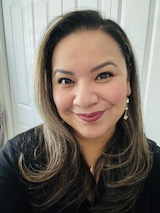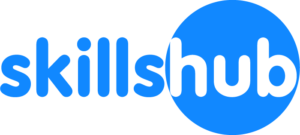The Power of Strong Sentence Frames

By Alma Ortiz-Agib and Sunday Cummins

Alma
Sentence frames are essential scaffolds for helping English language learners in our classrooms access the English language more easily. They help students determine what is important in a lesson or conversation – what they need to focus their energy on.
Sentence frames make it easier for students to capture their thinking and contribute to discussions using academic language. They also serve as a bridge to transferring this language into their speaking and writing.

Sunday
Writing powerful sentence frames that target language development over time can feel daunting though. How do we decide what to include in a frame? How do we structure the frame? How do we use the frames during instruction?
For the last two years, we have partnered with teachers in California’s San José Unified to take on this endeavor. What follows are simple recommendations based on what we’ve learned.
Creating strong language objectives
If we want to be intentional in supporting our English learners as they develop proficiency in English, we need to have clear language objectives – clear, specific goals that outline how students will use language. Explicit language objectives can create clarity not only for our students but also for ourselves. Moreover, they also allow us to develop sentence frames that are aligned with the content task and the language needs of all learners.
To create a strong language objective, you will need to be able to answer three questions:
1. What is the content I want students to learn?
2. What should they be able to do with this content to reveal learning?
3. What type of language will they use to reveal this is being achieved?
STEP 1: What is the content I want students to learn?
This part you can identify easily. Think across your day. In science, you might be teaching the properties of matter. In social studies, you might be teaching about the European explorers who navigated their way to America. In English Language Arts, students might be analyzing a character’s trait in a self-selected novel.
STEP 2: What should students be able to do with this content? What’s the task?
This is where you need to choose a measurable verb or function. Examples of measurable verbs include distinguish, describe, calculate, and demonstrate.
In science you might want students to compare and contrast the properties of different materials. In social studies you might want students to explain the impact of the European explorers on the indigenous groups they encountered. In ELA, you might want students to describe a main character’s traits and share evidence from the text to support their thinking.

STEP 3: What type of language will the students use to accomplish the task and reveal learning?
Now you need to identify the form of language (i.e., grammar) the students will be using. Examples of form include linking words (and, so, because, for example, additionally), modal verbs (must, shall, will, should), compound sentences, and complex sentences.
Considering which stage of language development (e.g., emerging, expanding, bridging) your students are in will help you choose the forms they need to work on. A helpful list of forms is the widely used Dutro’s ELD Matrix of Grammatical Forms (Dutro, 2005) available here and elsewhere on the internet.
With the content, function, and form in mind, create a language objective using the following frame: Students will (function) using (form). This is what a few might look like:

• Students will compare and contrast the chemical properties of different matter using adjectives (e.g., similar, different) and adverbs (e.g., similarly, in contrast).
• Students will explain the impact of European explorers on the indigenous groups they encountered using complex sentences with conjunctions (e.g., because, but, so).
• Students will describe the traits of a main character using compound sentences and descriptive adjectives.
Then use your language objective to create sentence frames
Design multi-level sentence frames (beginning, intermediate, advanced) for your students with the language objective in mind. Think about what you want to hear students say that would reveal they are beginning to grasp the content as well as the language. Another widely available resource on the Internet is the Academic Language Function Toolkit (Sweetwater Union High School District, 2010), which includes a plethora of categorized sentence frames and is available here and at other education websites.
What follows is a set of multi-level sentence frames for the following ELA language objective:
Students will describe the traits of a main character using compound sentences and adjectives.
- Beginning:
- (Name of character) is (adjective) and she/he/they is/are also (adjective).
- Intermediate:
- In the story _________, (name of character) is (adjective) because she/he/they __________ and (adjective) because she/he/they _______________.
- Advanced:
- The (name of character) revealed that she/he/they is/are (adjective) when she/he/they ____________________ and this was disclosed again when _______________________.
Post, model, and provide guided practice
An integral part of an English learner’s language development is their ability to engage in daily oral practice. Ideally, the frames you create will be used multiple times – over the course of a lesson and several lessons. Take the time to create a chart or slide with the frames or provide copies of the frames (on a quarter sheet of paper). Then you can post them or hand out the frames for students to easily reference.
A few teachers we have met post their multi-level frames with images to support students in choosing the best frame for them. These include images of figures moving at different speeds – of a figure walking (for the beginning level frame), of a figure running (for the intermediate) and of a figure flying (for the advanced) or images of different types of chili peppers (mild, medium, hot).

Students need to hear what the frames sound like when used so be sure to model using the frames. This should include letting students know how you decide which words to use in the sentence frame. After you model, ask for a volunteer or two (but not too many) to share examples of how they would complete the frames.
Then ask the students to try out using the frames with a partner. Lean in to support pairs as they orally compose their sentences, offering guidance as needed. An engaging way to do this is to ask students to stand in lines of communication. Students get in two lines, facing each other. Each student shares their sentence with the person they are facing. Then one of the lines moves down a student and the students share again with a new partner. (You can continue to coach pairs as they share.)
The more practice students can get using the frame, the more likely it will become part of their regular language use.
Encourage partners to respond to each other
Ultimately, we want students to use the more complex forms of language they are developing to engage in thoughtful conversations with each other. Strong sentence frames are an initial step towards that.
In a follow-up article in early August, we plan to discuss how collaborative language frames can be used as a scaffold for these conversations. For now, the easiest recommendation is to ask partners to paraphrase or repeat what they just heard a peer say. You can provide simple frames like “I heard you say…” and “So you are saying that…”
Start small, with intention
With intentional planning – of language objectives and related sentence frames – we can nurture growth in language development. This has the potential to impact students’ reading and writing as well. If you’re new to this, we recommend that you start small. Try developing one language objective for one content area as well as a related sentence frame – just one time. Then try doing it more often – once a week or month. It gets easier with time. When you observe your students’ responses as they access the English language (and content) more easily, it will feel well worth the effort.
Alma Ortiz-Agib is in her fourth year serving as the Elementary Bilingual District Instructional Coach for San José Unified School District. In this role, she supports curriculum development and professional learning practices aligned with the district’s initiatives to enhance outcomes for English Language Learners in both their English Only and Two-Way Bilingual Immersion Program Strands. Prior to this position, Alma served as a Site Bilingual Instructional Coach at one of the district’s Two-Way Spanish Immersion program schools and as a classroom teacher.
Sunday Cummins, Ph.D, is a literacy consultant and author and has been a teacher and literacy coach in public schools. Her work focuses on supporting teachers, schools and districts as they plan and implement assessment driven instruction with complex informational sources including traditional texts, video and infographics. She is the author of several professional books, including Close Reading of Informational Sources (Guilford, 2019). Visit her website and see more of her MiddleWeb articles here.





